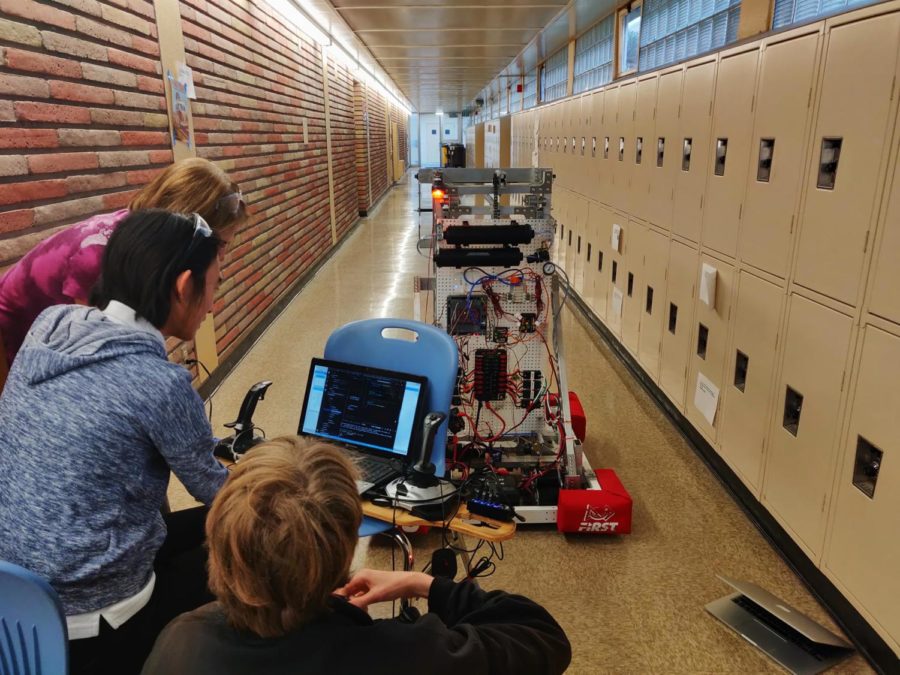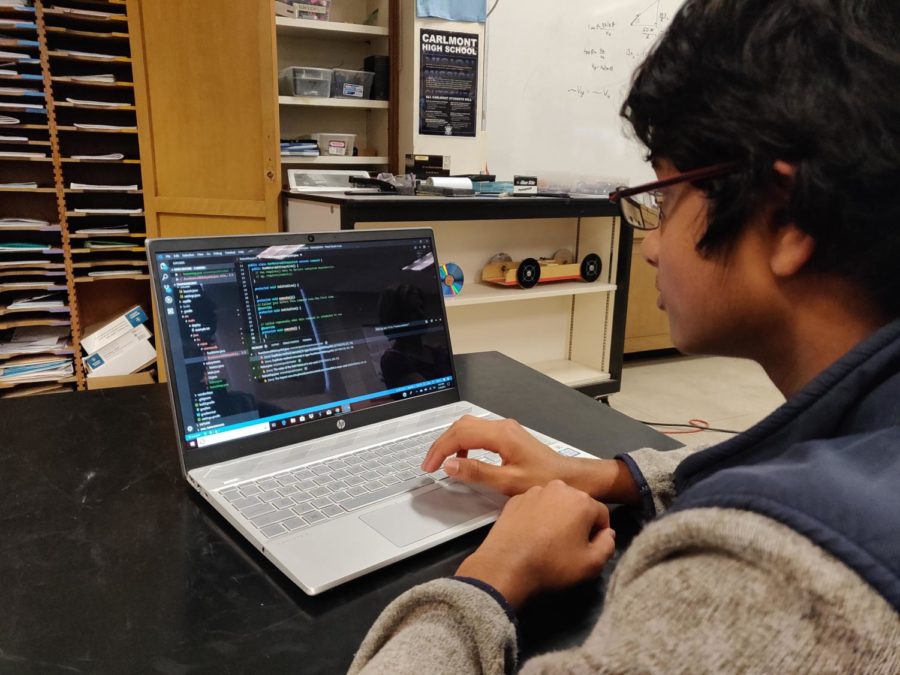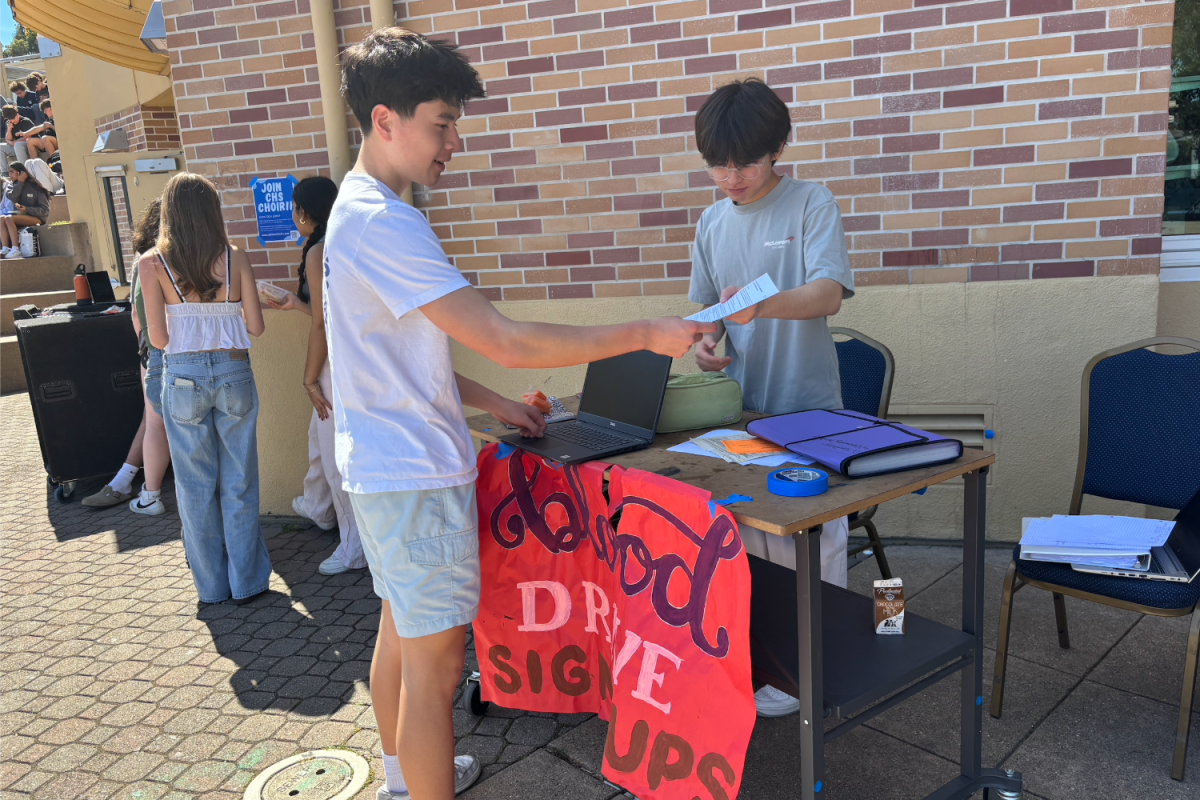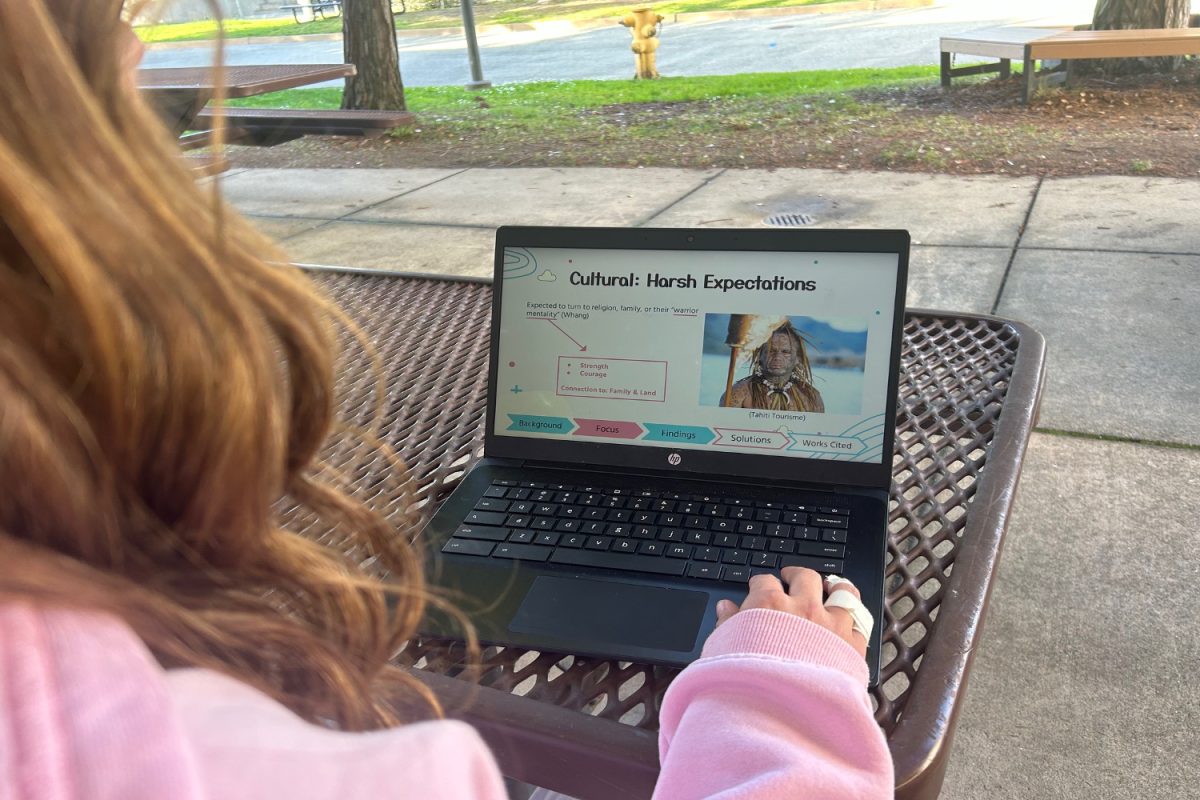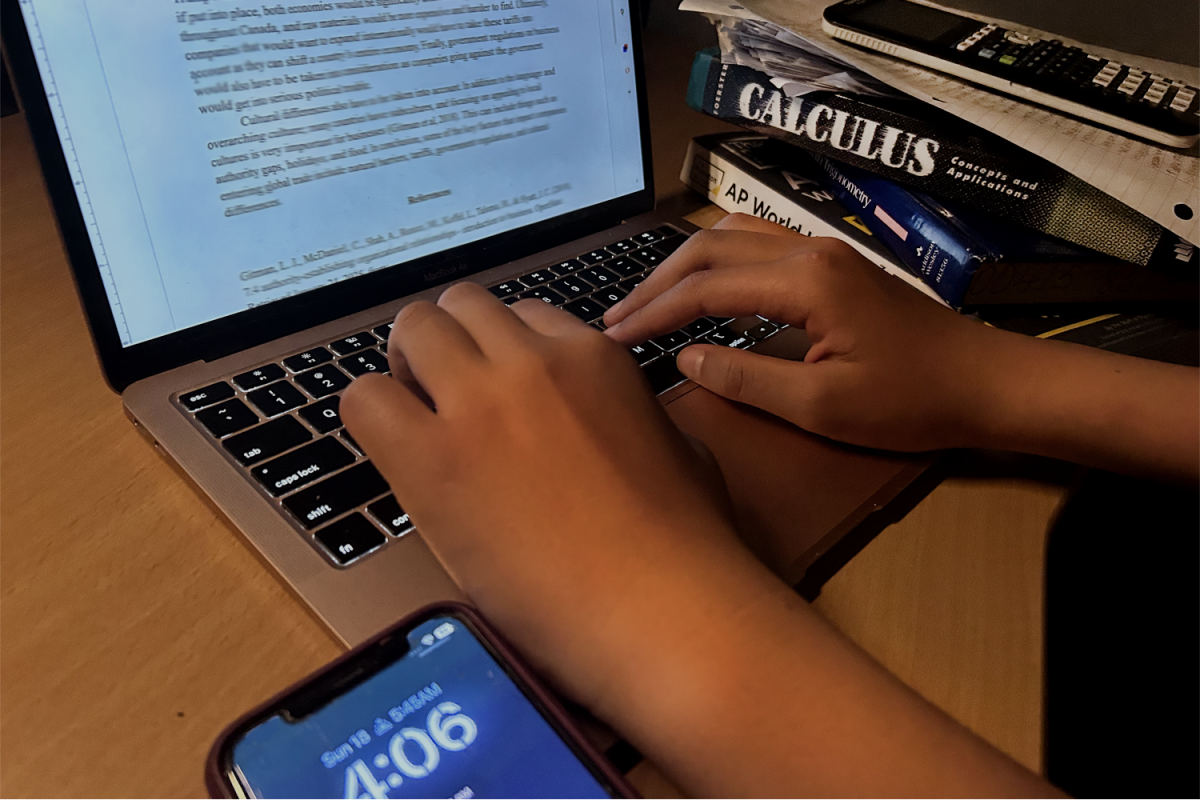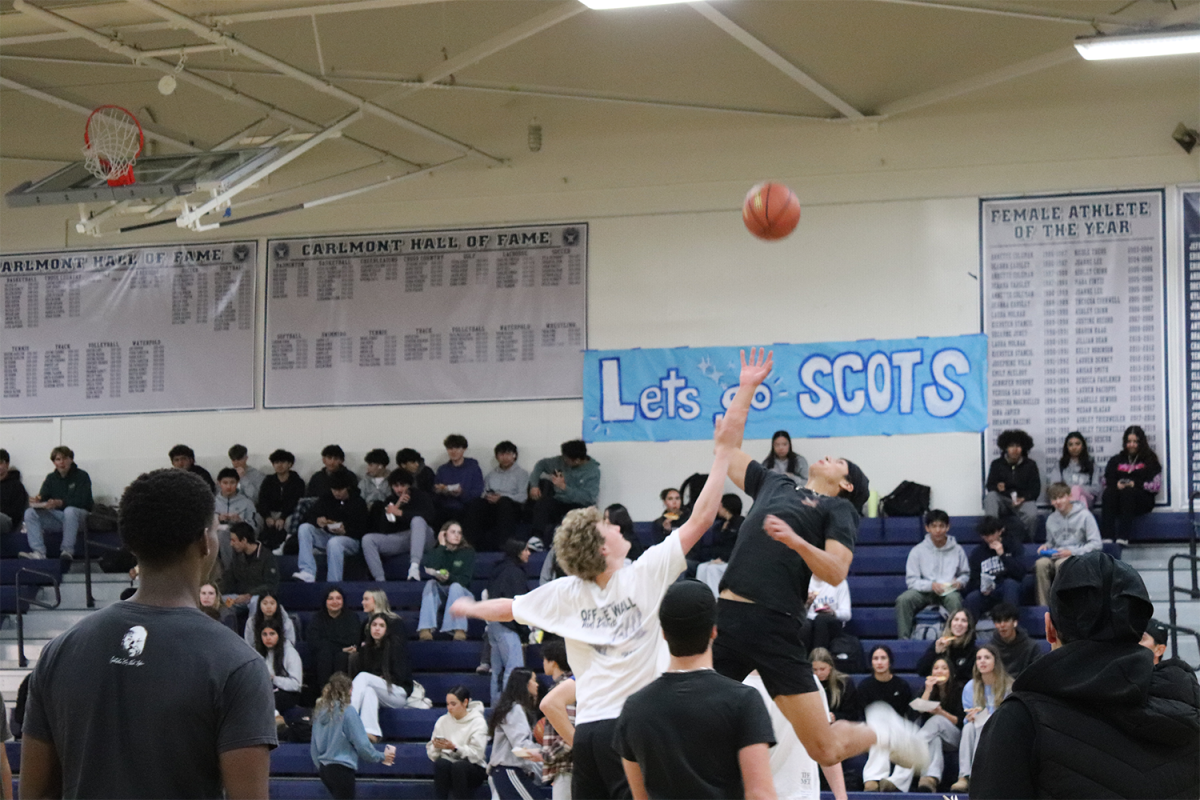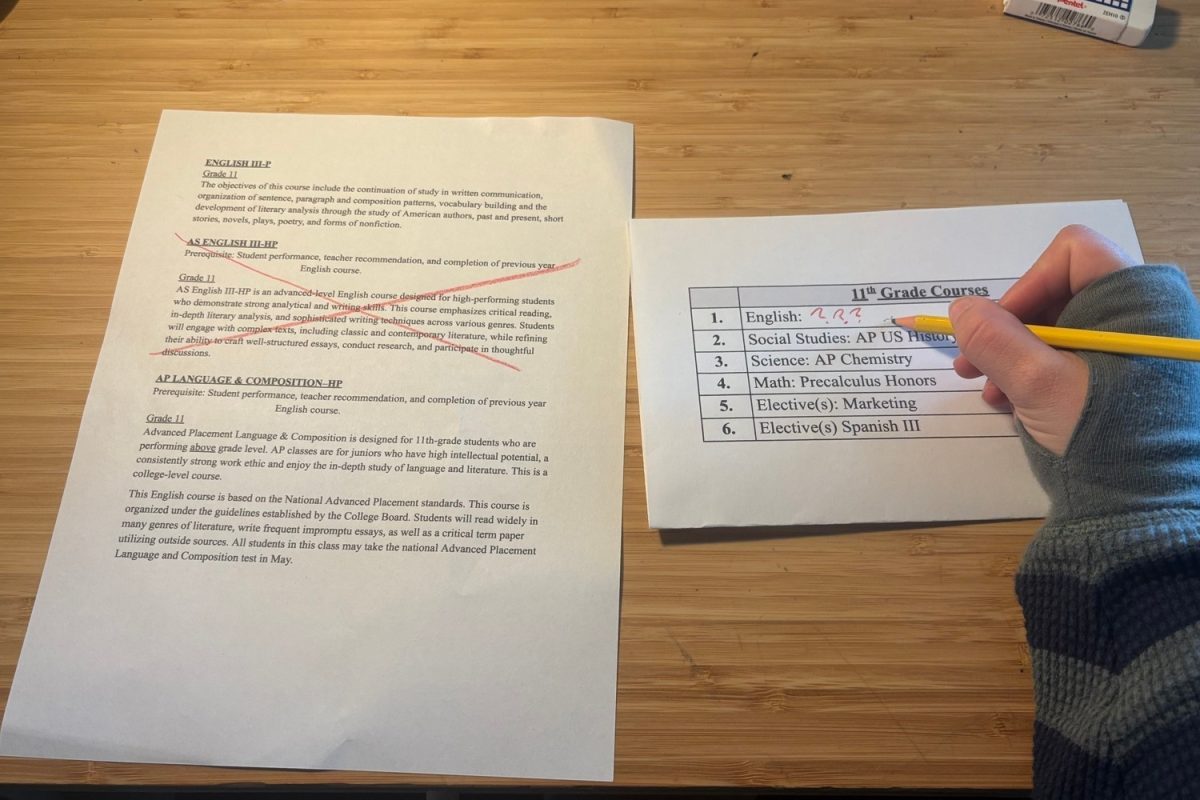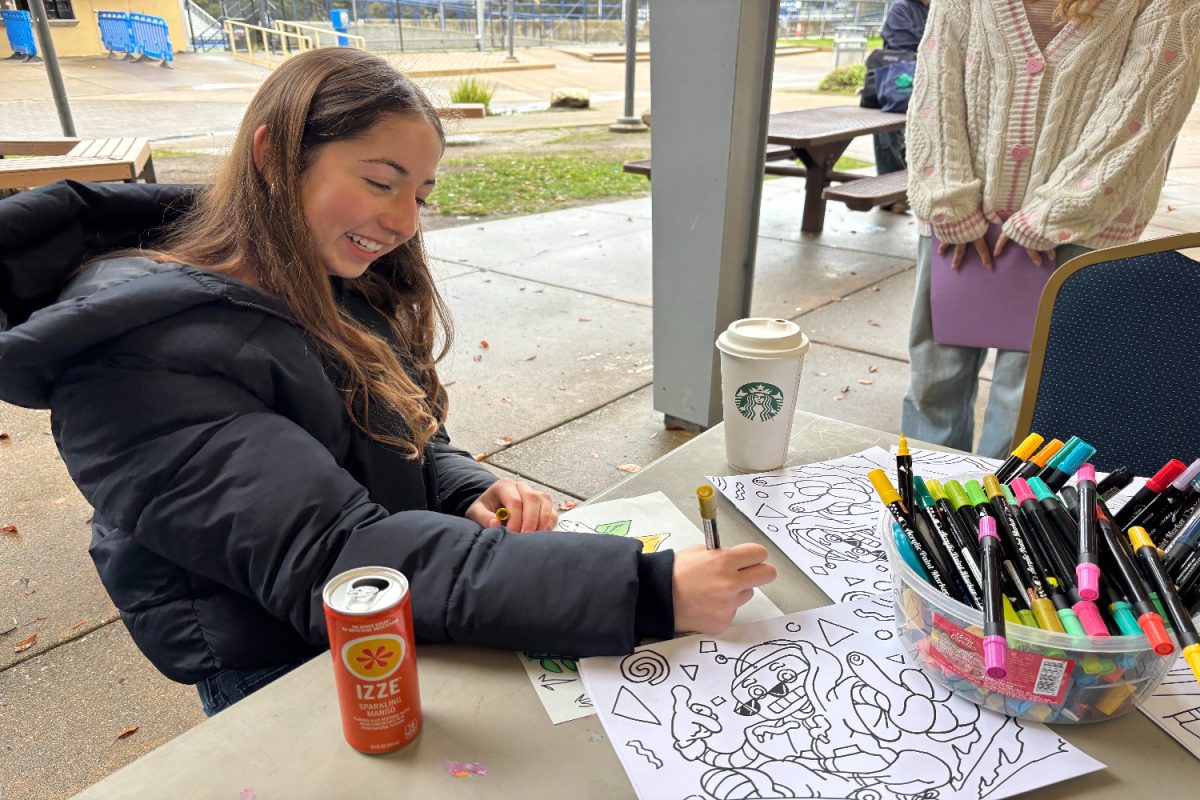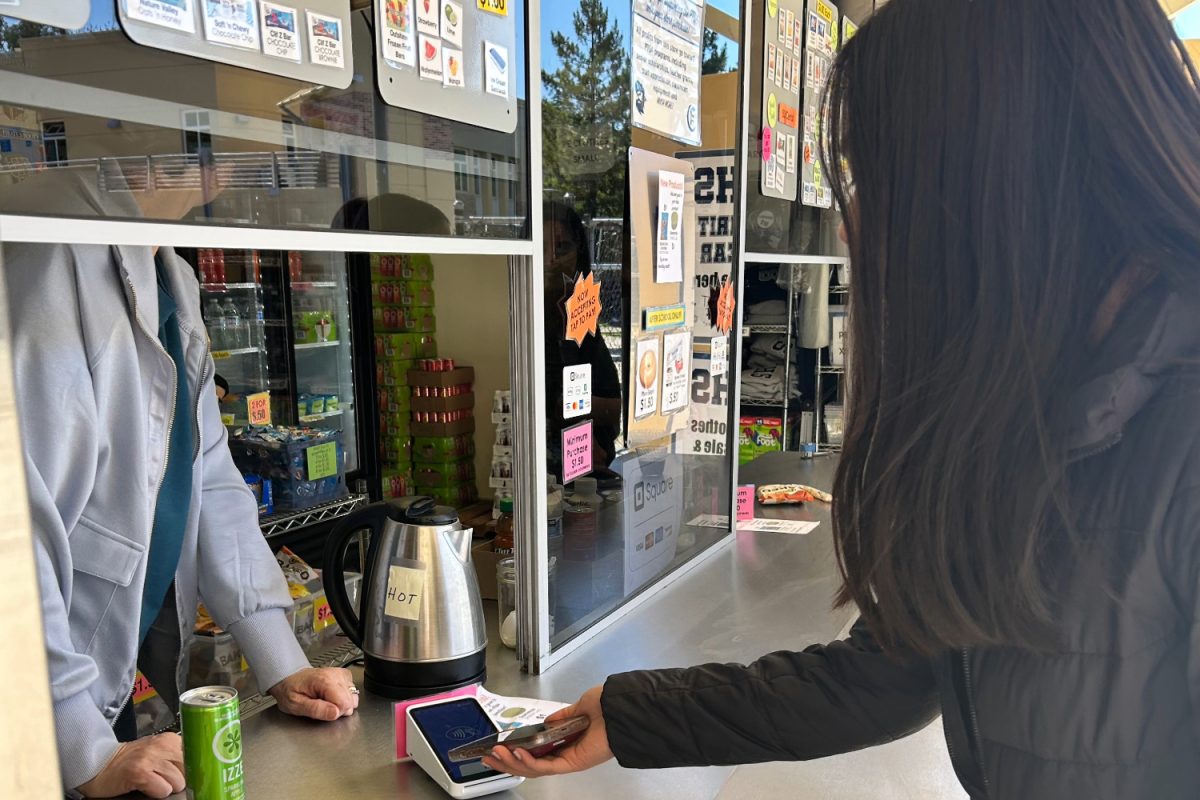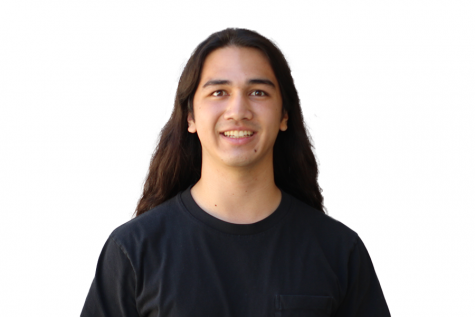Many students imagine robotics as a group of computer geeks living in a lab year-round.
In reality, this is not the case. Members do not need to be STEM experts nor devote all their free time to the club. In fact, many people join with little to no prior experience.
“Initially, I had some experience in Python, but not in Java,” said Avirral Agarwal, a freshman.
Agarwal was interested in computer science and decided to join Robotics this year as a freshman. Although he was not new to programming, he did not know Java, the coding language used for the robot. He has been attending robotics three to four hours a week, learning Java with the help of his peers and mentors.
Carlmont’s Robotics team, Deep Blue, is part of a larger organization called For Inspiration and Recognition of Science and Technology (FIRST). FIRST is an international organization with teams from Turkey, Mexico, and China participating in competitions each year. The mission of FIRST goes beyond robots; they want students to have real-world experiences and chances to problem solve on their own. If they get stuck, students have mentors who are ready and willing to help.
There are three main parts to robotics, the pre-build, build, and competition season. Currently, the robotics team is in the pre-season, where students master the basics needed for competition.
At the beginning of January, FIRST releases a new challenge, and the team heads into two months of designing, programming, and assembling. Then, they dive into competitions. Teams start with regionals with around 40 to 70 different schools competing. Only six of those schools can secure a position in the national championships.
During pre-season, the average member meets three to nine hours a week, comparable to the time other kids spend doing high school sports.
“I think that as long as you are committed, and as long as you can focus while you’re doing your homework, it’s definitely manageable to succeed both academically and in robotics,” said Kevin Wang, the team captain.
Deep Blue is divided into five different teams: programming, sensing and actuation, design, fabrication, and communications. Each team faces its unique challenges. For example, the programming team needs to complete an autonomous task and code specific actions such as picking, placing, and throwing objects.
On the surface, the goal of a semester of training, two months of building, and multiple competitions are to qualify for the World Championships in Houston. And this year, Carlmont’s team, Deep Blue, are feeling at their best.
“Our team this year […] is the strongest that we’ve ever been. We have a very strong leadership team with a lot of experience, so I’m confident in our ability to succeed in competitions this year. We’re aiming for World Championships,” Wang said.
Regardless of results, the team’s core objective is to build a community where members can freely exercise their creativity and collaborate. They want to introduce students to the STEM field and possibly inspire them to pursue these subjects further.
“Our goal every year is to have as many students as possible, learn as much as possible, and come away with an interest or an interest in the STEM field,” said Dean Brettle, a mentor who has been helping for five years.

